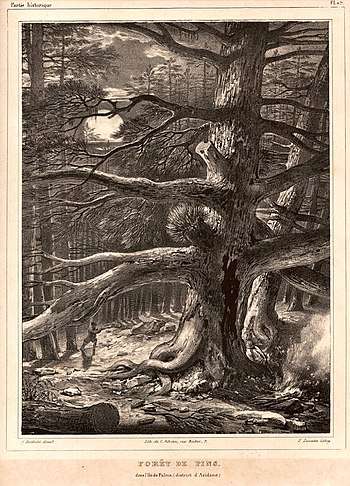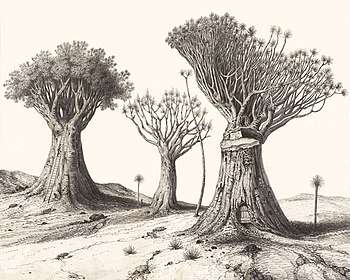Natural History of the Canary Islands

Natural History of the Canary Islands (French: Histoire Naturelle des Îles Canaries)[1] is a book with illustrations and written descriptions of botany from the Canary Islands, it was written in collaboration by Philip Barker Webb and Sabin Berthelot. It was published in Paris between 1836 and 1850 and are divided into four sections and 71 parts. The work was the most important text about the Canary Islands in the 19th century in the field of natural sciences.[2]

The text was originally written in French, it saved a large part of Phytographia Canariensis (Canarian Phytography), it was later written in Latin. In addition to the two main authors, it took part in an important scientific composition which was carried into dedicated parts, zoology and botany of the islands.[2] The work includes more than 430 pages including engravings and drawings made by the most prestigious draughtsmen and engravers of the time (one of them was the English J.J. Williams) and makes up of one of the greatest attractive works, where it contributed to a science text of the first half of the 19th century, it continued to have interests, even validity, in areas with cartography, the systematic botany and geo-botany, also in certain different Canarian zoology. The themes of the work is very broad and surpasses which was traditionally for natural history - a name which was later replaced with natural sciences, for which more of it broadened the three kingdoms of nature, geology, botany and zoology), dedicaded a part of the work to physical, botanical, economic and human geography, and questions of history and ethnography of the Canaries.[2]
Philip Barker-Webb, on one of his trips to the Brazilian expedition, planned a short visit to the Canary Islands, instead, he stayed for a longer time. During his time in the islands between 1828 and 1920, he recollected the specimens from the area and together with Sabin Berthelot, he made an encyclopedic like work which took about 20 years to complete. One of the other contributors to the work included Justin Pierre Marie Macquart and Alfred Moquin-Tandon.
References
External links
- The work available at Project Humboldt by the Canarian Orotava Foundation of the History of Sciences
- Natural History of the Canary Islands at IPNI